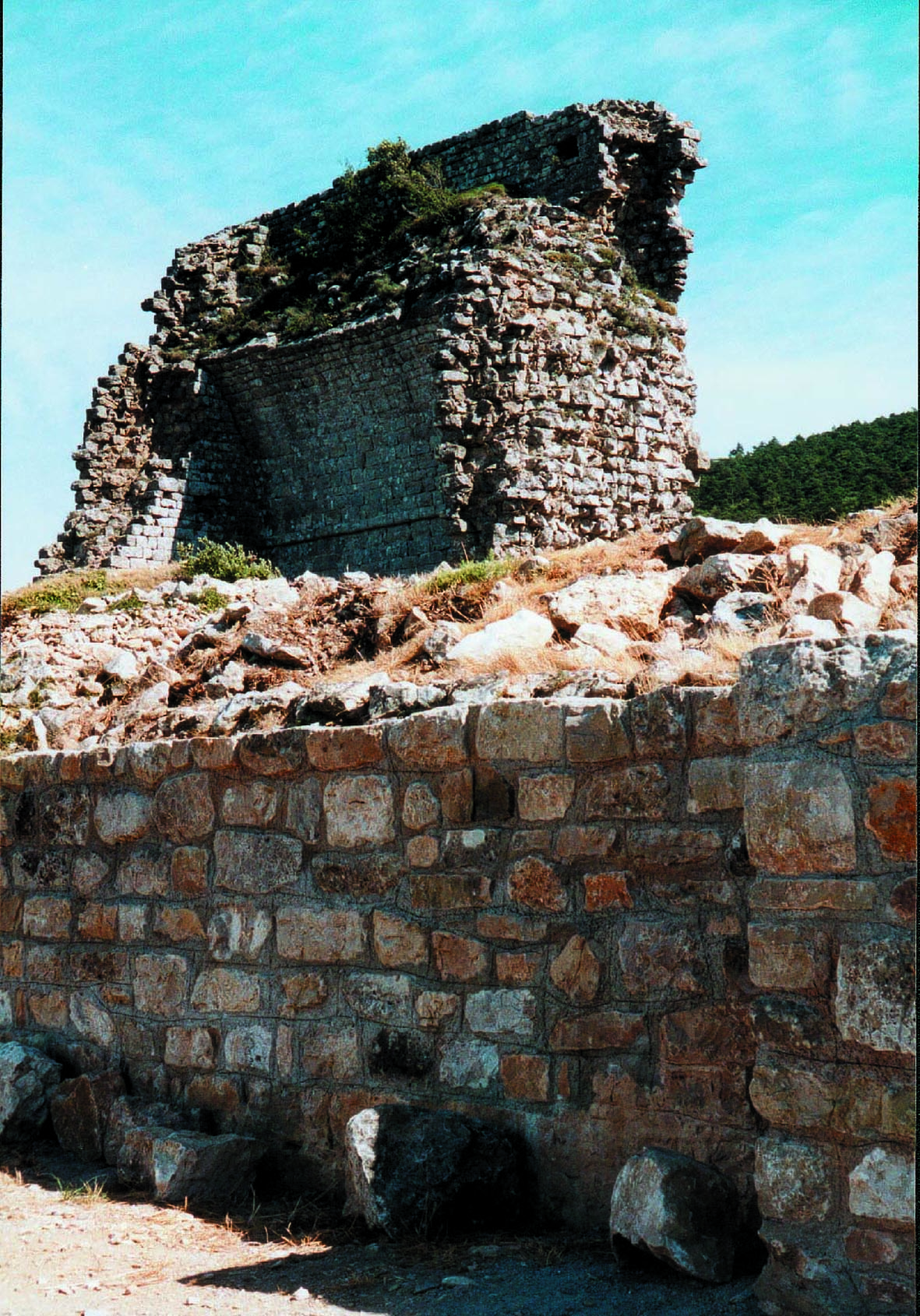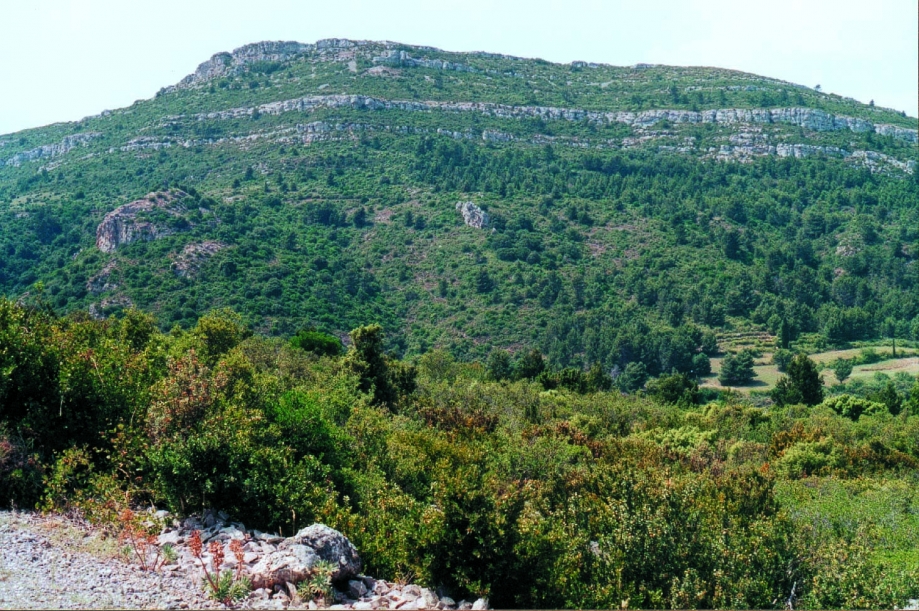Montagne d'Alaric
Alaric's castle near Barbaira, Aude
Find Barbaira on the main road, the N113, a little east of Carcassonne.
Although Barbaira has existed since Roman times, there are few remains. The fort once had two towers and would have monitored the road between Carcassonne and Narbonne. Inside the church is a Notre Dame du Pech - Our Lady of the Hill - a very old statue, but not Visigothic. There’s a church dedicated to St. Junien, from 13th to the 17th century, with a 15th century clocktower.
Follow the signs to the Mairie of Barbaira and find it opposite the school. Cross the railway line in front of you and you will see the signpost to the “ruines de Miramont.” The road is narrow and steep and I prefer to come down it than go up! An adventure.
There is another approach - find the village of Monze on the D3 south of Trèbes and continue towards Pradelles-en-Val. Just as you leave Monze, you’ll see an unmarked but tarmaced track to the left. Go up this, which is really a forestry track, and you’ll come to a crossroads of tracks. The one opposite you has a single-barred gate across it; it’s possible to park nearby without blocking the road, duck under the gate and then the château is only 100 metres walk.


Montagne d'Alaric and "Miramont" - the front wall was repaired by archeologists, leading to the local theory that the treasure of Alaric was bricked up behind it.
The château is huge and 501 metres up, with splendid views. The donjon and great encircling walls, many feet thick, remain. Below them are the remains of cottages where the workers lived. Although it is officially called Miramont, it’s believed to be the château or home of Alaric, and is still called Château d’Alaric by the local people. They believe the remains of King Alaric rest in an enormous cavity under the walls, where he was buried “with his women, his elephants, his servants and his chests full of pearls, precious stones, gold, incense and myrrh.”
The chateau was rebuilt in the 11th century on the ruins of the Visigothic fortress - the foundations are Visigothic. By 1119, it had passed from the counts of Toulouse and Foix to the Abbey of Lagrasse. It was owned by the knight Chabert of Barbaira when Simon de Montfort came by in 1210 and besieged the castle in icy rain and a howling tempest for eleven days, then put all the people in it to the sword. It has not been lived in since.
Inscrivez-vous au site
Soyez prévenu par email des prochaines mises à jour
Rejoignez les 21 autres membres
